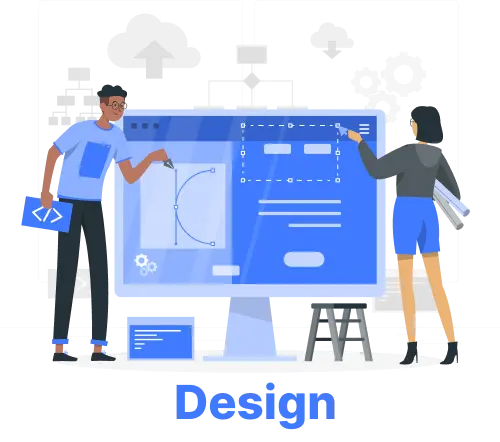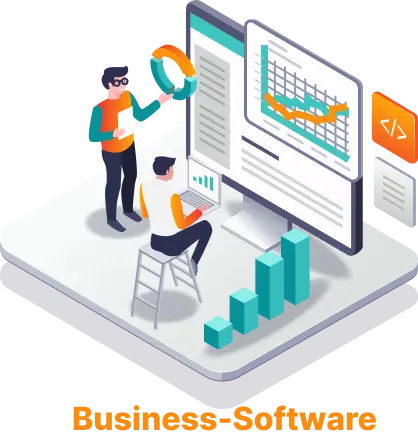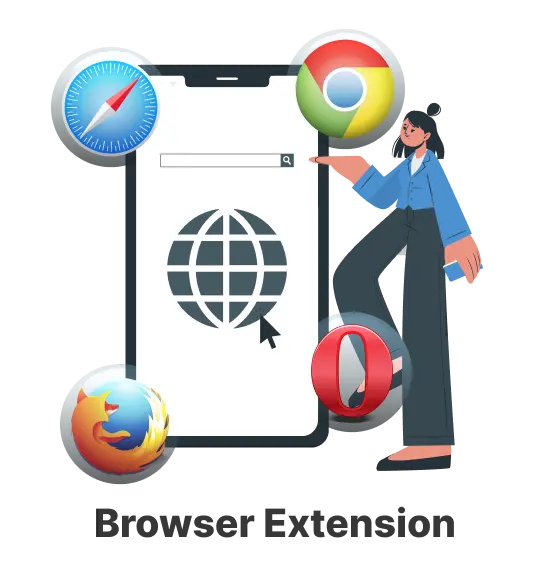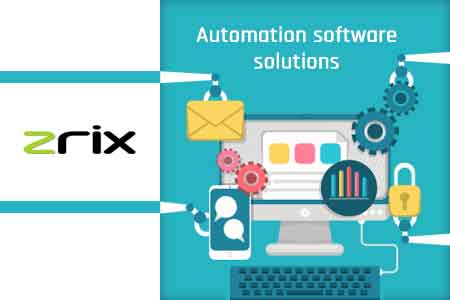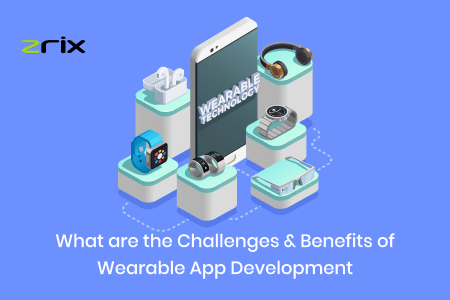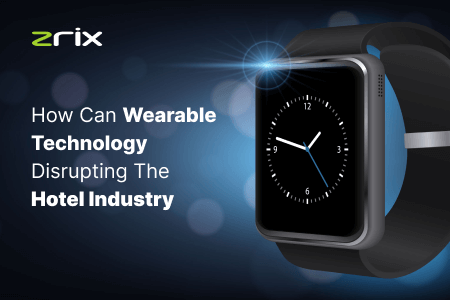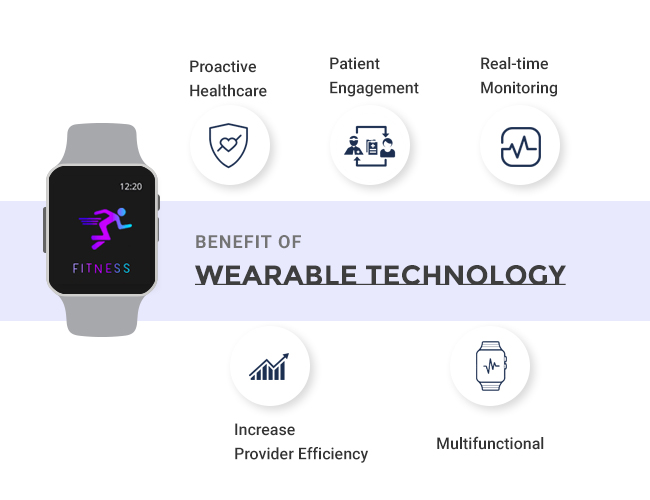Impacts Of Wearable Technology On Healthcare Automation Industry
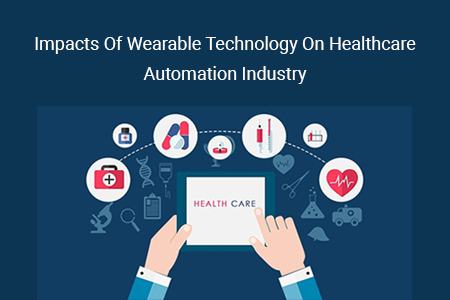
Getting easy access to patient information by understanding their behavior is all possible with healthcare technological advancement. The wearables like Fitbit and FDA in healthcare automation industry of USA has a complete story to tell us about the needs of technology in healthcare.
Market reports show that the global market of medical wearable devices by 2021 will reach $12.1 billion. On top of that, the USA will be representing the largest healthcare market share in the world.
Today in the USA among every six consumers, one owns and uses a healthcare wearable device. Right from history, the niche of technology has been bold and dramatic in the healthcare sector.
While in the modern technological scenario, with the Internet of Things (IoT) advancement, wearable devices monitor patients in real-time. As a result, there is a significant price drop in embedded engineering frameworks, APIs, sensors, and open-source libraries.
What is a healthcare wearable device?
One can all it noninvasive and autonomous device that performs a particular medical checkup function over a prolonged time. There are smart wearables in the technology which profits patients healthcare.
Since last five years, the use of wearable technology has tripled! In USA more than 80% of people willingly wear fitness bands, pulse checker, etc.
This growing demand for such devices is a clear indication of wearables booming up in the market fastly. Not only in USA, but in the rest of the world also, wearable devices are fastly spreading, especially in countries like UK, Russia, China, Japan, India, UAE, and Singapore.
Also Read: How Drupal is Revolutionizing the World of Healthcare?
How Wearable Devices Benefit Healthcare Industry?
Most of the wearable devices are used to track wearer’s health & fitness related data. Due to the sudden invasion of technology, the healthcare sector is undergoing a digital revolution.
The crossover of Artificial Intelligence and Bigdata in wearable devices is adding more value to healthcare in terms of patient monitoring, diagnosis, treatment, and disease prevention.
Wearable devices in healthcare offer multiple advantages! We are going to highlight each of them here in this section:
-
Personalization: With healthcare software, doctors no more need pen and paper to fill the patient's data. Software upon patient's access quickly gets their data in a more personalized manner.
-
Early diagnosis: The wearable devices easily help in the early detection of any disease.
-
Patient monitoring: Patients monitoring in real-time is easy with wearable devices.
-
Commitment to medication: Wearable devices remind and help patients to take their medications even if they fail to remember.
-
Information registry: PHMS - Patient Healthcare Management Software store real-time data and briefly prepare a medical history that can be used by medical specialists.
-
Improve the doctor’s decision making: The collected data is easily compared and analyzed by the doctor to enhance the patient’s life.
In 2014, many custom software development companies in USA jumped into the healthcare sector. As a result, the US’s consumer rate of wearable devices jumped to 33% in 2018 while in 2014, it was 9%.
Wearable technologies via electronic devices in healthcare automation industry use smart health watches, Fitbits, blood pressure tracker, wearable fitness trackers, wearable ECG monitors, biosensors, and many more.
Doctors, specifically the surgeons quickly adopted wearables like Google Glasses to perform surgeries by preloading CT and X-ray images. Soon, we will see the use of healthcare robotics also alongside wearable devices.
Until now, there were no strong points on wearable technology, improving the clinical procedure outcomes from the Operation Rooms (OR). But, the use of Google Glasses in surgeries shows that it took 8.8 -10.5 seconds less with the original surgical process.
While for patients, wearables are becoming very helpful, they collect their minute data about fitness, and second, they are more efficient in prioritizing patients.
For example, the BioPatch alerts the nurses via smartphones and give them the ability to prioritize the patients more efficiently.
Healthcare apps for patient benefits are also a great sign of how mobile application development companies in USA will take the lead in healthcare technological advancement.
Does Wearable Technology Reduce Medical Expenses?
Hospital trips always cost time and money. Additionally, the consultation charges and the other expenses increase the bill over your head while the wearables save your healthcare expenses.
Especially for the patients suffering from hypertension and diabetes, wearable technology daily evaluates their health condition.
Daily evaluations lead to better diagnosis, the easier treatment and reduce the complications of regular checkups, and routine hospital tours.
While for the doctors, it is the best way to diagnose any underlying condition after getting real-time data easily. The collected data help doctors and medical staff to accurately understand the patients every single condition, saving doctors time and money on the big healthcare equipment.
Also Read: How Automation Is Revolutionizing Healthcare Sector?
What is the future of medical devices with wearable technology?
The wearable healthcare technology market is rising high! In the next five years, we will see many healthcare automation companies put wearable devices on the hands of people.
This trend will grow continuously, will provide health providers and companies, insurers, and consumers the better benefits of health monitoring devices.
“Today, 75% of users using wearable healthcare technology agrees that such technologies are benefiting their health. Moreover, the USA will grow at a 10% rate every year, and around 120 million users will use healthcare wearables by 2023.”
Software development companies see a significant benefit in offering wearable healthcare technological devices. In the coming years, wearable technology will become more conventional.
But, for that device connectivity must be expanded everywhere on earth if we need a fully tech-automated healthcare industry responsible for providing healthy lifestyles.
Get efficient healthcare: Future trends
With the current estimates, in the coming 15 years, we would see wearable technology a global cost-saving healthcare sector that would boost up to $200 billion.
The increasing use of AI, IoT, Bigdata, etc. on integration with each other accurately tells us that the wearable technologies will manifest as the cost-saving healthcare idea.
Also, it will allow patients to seek cheaper, more effective treatments in place of the long and expensive treatment process. We also hope that there will be a renewed approach to spotting illness and operations.
There is no doubt that wearable technology has great potential, but how healthcare software solutions are going to make it equally available is a big unanswered question.
To answer that, we have another article on another day!

